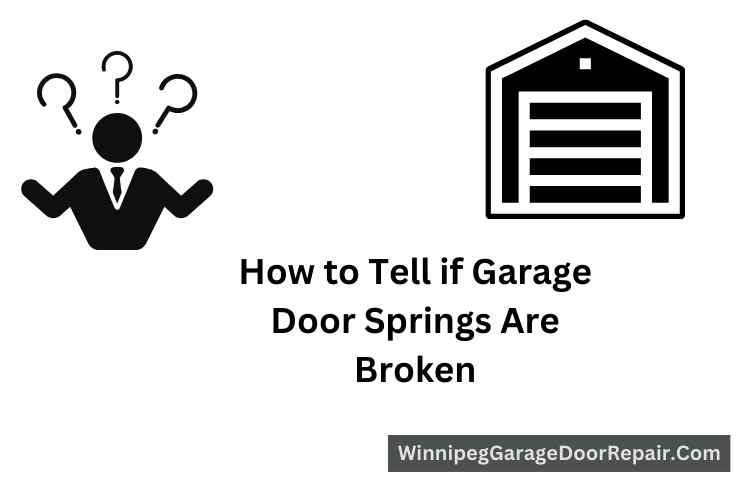Ever tried opening your garage door, only to find it stubbornly refuses to move? It’s a frustrating situation that many homeowners encounter, often due to a broken spring. Among the types of springs, the garage door torsion spring is particularly crucial for the smooth operation of the door. Recognizing the signs of a broken spring is essential for timely repairs, ensuring your door functions safely and efficiently.
Understanding the specific issues related to a torsion spring can help you identify problems more accurately. Let’s explore the 11 key indicators that your garage door spring might need attention, keeping in mind the unique characteristics of torsion springs and their role in your garage door’s mechanism.
11 Sign of a Broken Garage Door Spring
1. Door Not Responding
An unresponsive garage door can be the first clue. If pressing the remote or wall switch yields no movement, the spring might be the culprit, unable to support the door’s weight for operation.
2. Loose Cables
To fix a garage door spring cable, cables that seem to dangle or have slipped off their drum are telltale signs. To address this, one might need to fix garage door spring cable, ensuring the cables regain their tension and position, thus restoring the door’s stability.
3. Heavy Garage Door
When manually lifting the door feels like lifting a mountain, it’s likely the spring has failed. Springs are designed to counterbalance the door’s weight, making it easy to open and close.
4. Door Not Opening Fully
A door that stops opening after a few inches likely suffers from spring failure. The spring’s tension is essential for full operation, and without it, the door cannot rise completely.
5. Visible Gap
Inspect the torsion spring, usually located above the garage door. A clear gap indicates the spring has snapped, a straightforward sign it’s time for a replacement.
6. Skewed Garage Door
An imbalanced door, hanging more on one side, suggests one spring has broken, causing uneven tension and alignment issues.
7. Loud Noise
A sudden, loud bang from the garage often means a spring has broken, releasing all its stored tension in an instant. This sound can be startling, signaling immediate attention is needed.
8. Garage Door Jerks
If your door moves in a jerky, uneven manner, it’s struggling without the support of its springs. Smooth operation depends on balanced tension, which is compromised with a broken spring.
9. Garage Door Closes Too Quickly
A door that slams shut faster than usual is dangerous and a clear sign of spring failure. The controlled descent is lost, posing a risk to objects and people in its path.
10. Broken Cables
While the cables themselves may not initially be the problem, a broken spring can lead to secondary damage or failure. To install a single torsion spring on a garage door, it’s crucial to address both components, as the cables are left unsupported and can snap under the strain.
11. Bent Door
A door that bends or folds at the top during attempts to open is under undue stress, likely due to a lack of support from a functioning spring.
Conclusion
Early detection of these signs can save you from the inconvenience of a fully inoperative door and the potential costs of more extensive repairs. Regular maintenance checks can help identify issues before they escalate. However, if you encounter any of these signs, it’s crucial to consult a professional. Garage door springs are under high tension and can be dangerous to replace without the proper tools and expertise. A professional can ensure a safe and effective repair, restoring your garage door’s functionality and safety.







